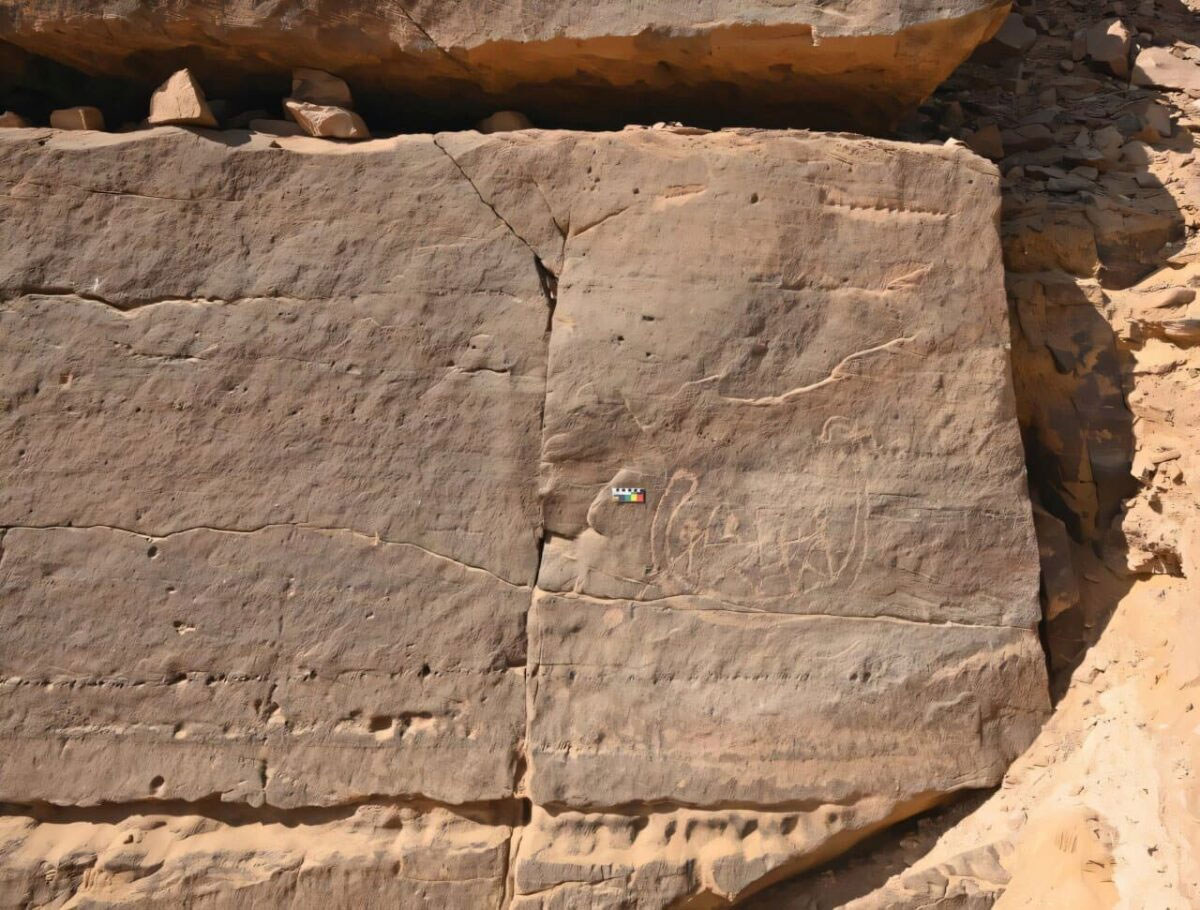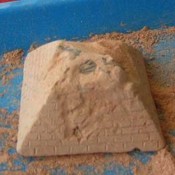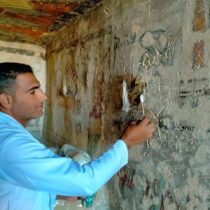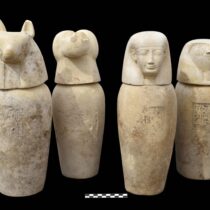Amid the ancient rock formations near Aswan, Egypt, archaeologists have uncovered a remarkably well-preserved 6,000-year-old rock panel that may depict a member of the First Dynasty elite. The discovery sheds light on the emergence of the Egyptian state along the Nile and how early leaders used imagery and landscape to project authority.
Carved into stone with exceptional detail, the panel features a boat adorned with decorations and manned by six human figures—five pulling and one propelling it with an oar. Of particular interest is a seated figure atop a raised structure interpreted as a palanquin, a sign of prestige typically reserved for high-ranking individuals. The figure’s elongated chin recalls the false beards associated with pharaonic kingship, hinting that this might be one of the oldest known visual representations of a ruler or noble during the critical phase of Egypt’s political unification.
The discovery dates to the late 4th millennium BC, a time of dramatic societal transformation as scatteredcommunities along the Nile began to unite under centralized authority. This culminated in the reign of Narmer, around 3100 BCE, often identified as Egypt’s first pharaoh. Yet, much about the origins and mechanisms of early state formation in Egypt remains unclear.
Understanding how Egypt became a state is still a challenge, according to Dr. Dorian Vanhulle, lead researcher of the study and a scholar at the Musée du Malgré-Tout. Nevertheless, rock art from the Lower Nile Valley offers rare windows into how power was expressed and legitimized during this formative era, he says.
One of the panel’s most symbolic features is the boat—a common motif in Predynastic and Protodynastic Egyptian art (c. 4500–3085 BC). Far more than a means of transport, boats were symbols of authority. Vanhulle notes that stylistic comparisons with ceramics, ceremonial palettes, and other artefacts suggest the panel was made during the transition between the Protodynastic and Early Dynastic periods—precisely when the Egyptian state began to emerge.
The artistic style aligns with official imagery from Narmer’s reign, and the depiction of a bearded seated figure reinforces the idea that the subject may have been an elite or proto-pharaonic individual. The engraving’s precision also implies professional craftsmanship, possibly commissioned by rising authorities to assert their influence and power.
Vanhulle explains that this wasn’t casual art, but a political statement. Such images functioned as territorial markers and messages of dominance at a time when power was becoming more structured, the researcher points out.
As modern development and industrial activity threaten Egypt’s archaeological landscape, the importance of rescue missions like this one becomes ever more critical. This panel adds a vital piece to the puzzle of how rock art helped shape and reflect early Egyptian political order—and why preserving such artefacts remains urgent.





